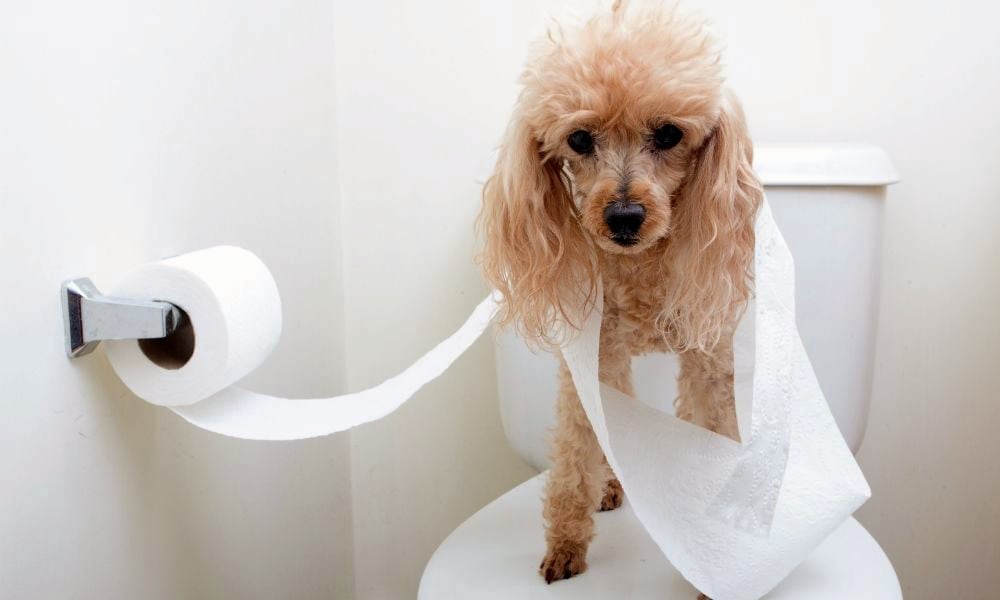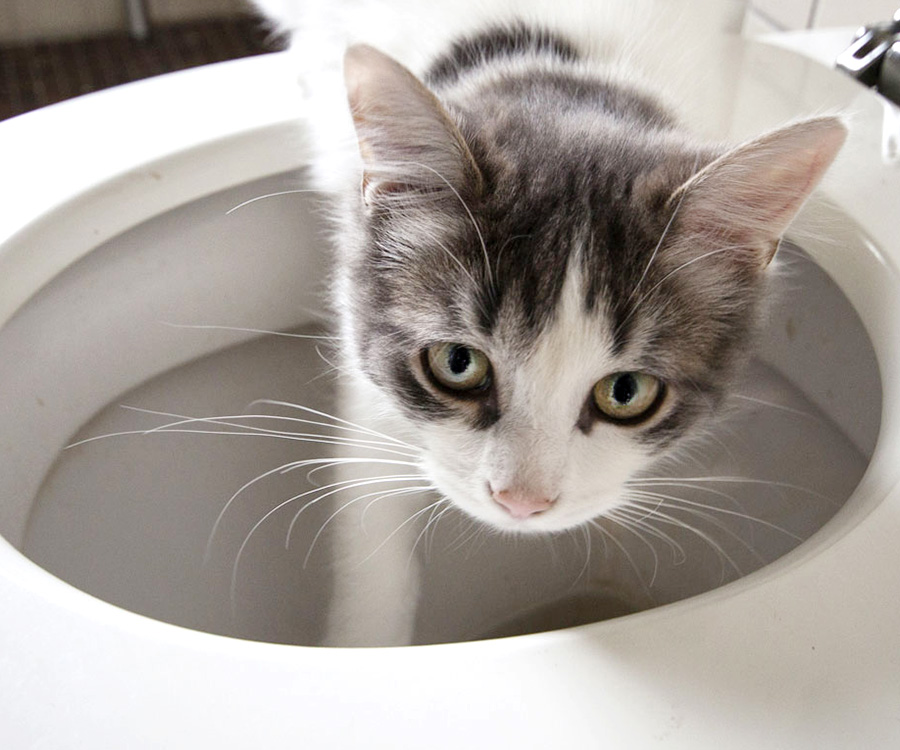Your Hazards of Animal Waste in the Toilet
Your Hazards of Animal Waste in the Toilet
Blog Article
What are your concepts on Can You Flush Dog and Cat Poo Down the Toilet??

When it concerns getting rid of waste, specifically animal waste, lots of people frequently resort to the hassle-free option of flushing it down the toilet. However, this apparently simple solution can have significant effects for the atmosphere and public health. In this short article, we'll explore why flushing pet waste down the bathroom is a bad concept and offer different techniques for correct disposal.
Introduction
Appropriate waste disposal is critical for preserving ecological sustainability and public health. While it may seem safe to purge animal waste down the toilet, it can lead to numerous concerns, both for the atmosphere and human well-being.
Risks of flushing animal waste
Environmental effect
Purging animal waste presents damaging microorganisms and microorganisms right into waterways, which can negatively influence aquatic ecosystems. These pathogens can pollute water sources and damage marine life, disrupting fragile environments.
Public health worries
Pet waste consists of unsafe germs such as E. coli and Salmonella, which can pose major health and wellness dangers to human beings. Flushing animal waste down the bathroom can contaminate water materials, causing the spread of conditions and infections.
Alternatives to flushing
As opposed to flushing pet waste down the bathroom, there are numerous different disposal approaches that are more environmentally friendly and sanitary.
Composting
Composting animal waste is a green way to dispose of it. By composting, raw material is broken down into nutrient-rich soil, which can be utilized to fertilize yards and plants.
Garbage dump disposal
Disposing of animal waste in a landfill is one more option. While not as eco-friendly as composting, it is a much safer alternative to flushing, as it avoids the contamination of water resources.
Pet dog waste disposal systems
There are customized pet dog waste disposal systems readily available that securely and hygienically dispose of pet waste. These systems typically make use of enzymes to break down waste and eliminate smells.
Actions to correct pet garbage disposal
To ensure appropriate disposal of animal waste, follow these actions:
Scooping and bagging waste
Routinely scoop and bag pet waste using eco-friendly bags. This avoids waste from contaminating the setting.
Making use of designated waste containers
Dispose of bagged animal waste in designated waste containers, such as garden compost containers or landfill containers. Stay clear of flushing it down the bathroom in all costs.
Cleaning up litter boxes and pet dog areas regularly
Consistently tidy litter boxes and family pet areas to avoid the accumulation of waste and microorganisms. Usage pet-safe cleansing products to keep health.
Advantages of appropriate disposal techniques
Embracing appropriate disposal methods for pet waste provides numerous advantages:
Reduced environmental pollution
Correct disposal methods reduce the risk of environmental pollution, shielding waterways and ecosystems from contamination
Decreased danger of water contamination.
By avoiding flushing pet waste down the bathroom, the danger of water contamination is dramatically reduced, securing public health.
Enhanced cleanliness and hygiene
Proper disposal methods advertise much better hygiene and health, creating a more secure setting for both people and pets.
Conclusion
Finally, flushing animal waste down the commode is unsafe to the setting and public health. By adopting different disposal techniques and adhering to proper waste monitoring methods, we can lessen the unfavorable impact of animal waste and contribute to a cleaner, healthier world.
What To Do With Dog Poo – The Do's And Don'ts get more info Of Disposing Of Faeces
Dog poo bins
Some councils provide dedicated dog waste bins in popular dog-walking areas that can take dog poo that has been bagged but you can legally dispose of dog waste in any public litter bin, as long as it is securely bagged. This also applies to your wheelie bin at home.
Do not flush
Water companies do not recommend flushing dog faeces down the toilet because certain parasites can survive the water processing treatment and are potentially harmful to humans. You should also never consider flushing dog poo that has been bagged down the toilet as the bags will not break down and instead create severe blockages in the sewage system.
In the woods
The Forestry Commission promotes a ‘stick and flick’ method for dealing with waste in the woods. This means finding a stick and using it to flick any poo from off the path so that it is out of the way of other walkers. You could also bury it as long as it is not in an area where there might be livestock.
Livestock
Parasites found in dog poo can be transmitted to livestock if they inadvertently eat infected faeces that has been left on grazing land. This could result in the death of sheep or abortion in cattle so you should always make sure you pick up your dog’s waste in fields where livestock could be present.

Consistently tidy litter boxes and family pet areas to avoid the accumulation of waste and microorganisms. Usage pet-safe cleansing products to keep health.
Advantages of appropriate disposal techniques
Embracing appropriate disposal methods for pet waste provides numerous advantages:
Reduced environmental pollution
Correct disposal methods reduce the risk of environmental pollution, shielding waterways and ecosystems from contamination
Decreased danger of water contamination.
By avoiding flushing pet waste down the bathroom, the danger of water contamination is dramatically reduced, securing public health.
Enhanced cleanliness and hygiene
Proper disposal methods advertise much better hygiene and health, creating a more secure setting for both people and pets.
Conclusion
Finally, flushing animal waste down the commode is unsafe to the setting and public health. By adopting different disposal techniques and adhering to proper waste monitoring methods, we can lessen the unfavorable impact of animal waste and contribute to a cleaner, healthier world.
What To Do With Dog Poo – The Do's And Don'ts get more info Of Disposing Of Faeces
Dog poo bins
Some councils provide dedicated dog waste bins in popular dog-walking areas that can take dog poo that has been bagged but you can legally dispose of dog waste in any public litter bin, as long as it is securely bagged. This also applies to your wheelie bin at home.
Do not flush
Water companies do not recommend flushing dog faeces down the toilet because certain parasites can survive the water processing treatment and are potentially harmful to humans. You should also never consider flushing dog poo that has been bagged down the toilet as the bags will not break down and instead create severe blockages in the sewage system.
In the woods
The Forestry Commission promotes a ‘stick and flick’ method for dealing with waste in the woods. This means finding a stick and using it to flick any poo from off the path so that it is out of the way of other walkers. You could also bury it as long as it is not in an area where there might be livestock.
Livestock
Parasites found in dog poo can be transmitted to livestock if they inadvertently eat infected faeces that has been left on grazing land. This could result in the death of sheep or abortion in cattle so you should always make sure you pick up your dog’s waste in fields where livestock could be present.

Do you appreciate more info about Don't Flush Your Pets Poo Down The Loo, Vet Warns? Put a remark down below. We'd be delighted to hear your ideas about this page. In hopes to see you back again in the near future. Sharing is nice. One never knows, you may very well be helping someone out. Many thanks for being here. Revisit us soon.
Call Today Report this page